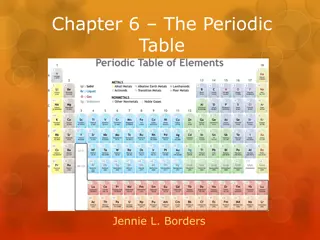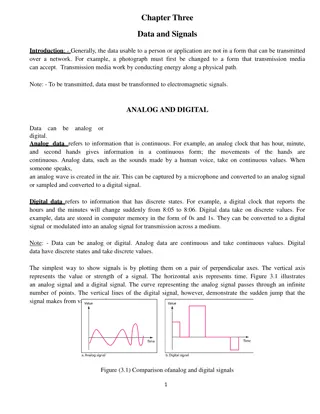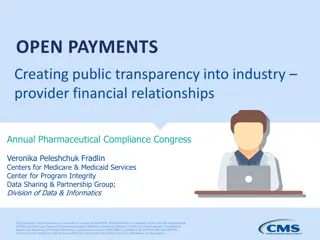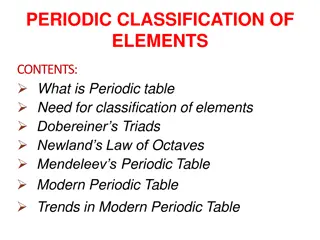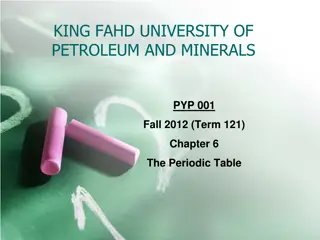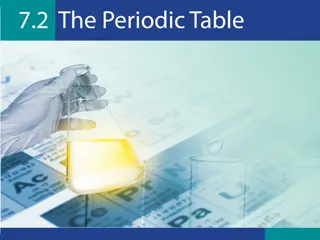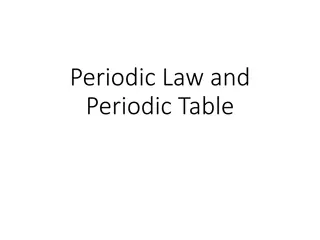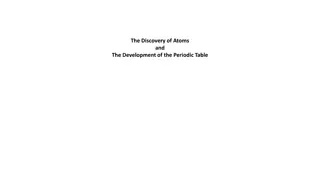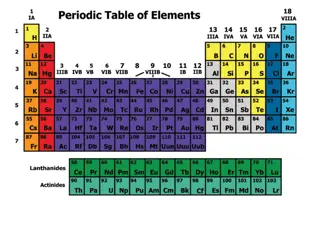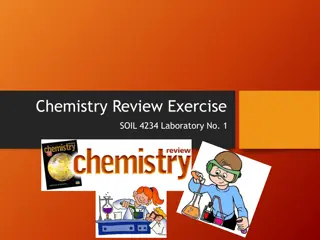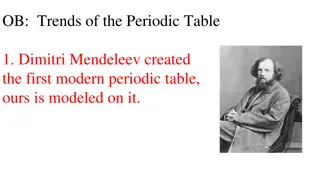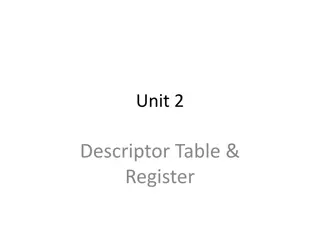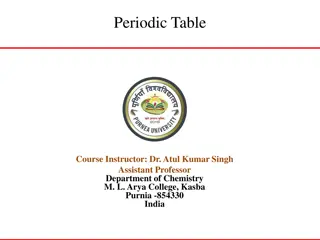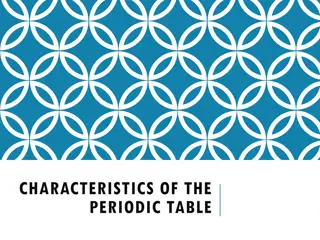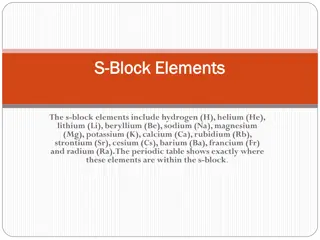
Understanding Opportunity Costs and Cashflow Analysis
Explore the concept of opportunity cost, compound interest, and cashflow analysis in decision-making processes. Learn about scenarios such as investing in a business, comparing simple and compound interest, and developing cashflow tables for financial planning. Discover the value of considering alternatives and making informed choices in resource allocation.
Download Presentation

Please find below an Image/Link to download the presentation.
The content on the website is provided AS IS for your information and personal use only. It may not be sold, licensed, or shared on other websites without obtaining consent from the author. If you encounter any issues during the download, it is possible that the publisher has removed the file from their server.
You are allowed to download the files provided on this website for personal or commercial use, subject to the condition that they are used lawfully. All files are the property of their respective owners.
The content on the website is provided AS IS for your information and personal use only. It may not be sold, licensed, or shared on other websites without obtaining consent from the author.
E N D
Presentation Transcript
IET 333: Week 2 Jung-woo Sohn (jzs177@psu.edu) College of Information Sciences and Technology The Pennsylvania State University
More from last week: Exponential growth: hard to predict Bill Gates myth? 640Kb ought to be enough for anybody. (1981) Design mistake with software: 8-bit CPU: Intel 8080 Maximum memory: 64Kb 16-bit CPU: Intel 8086 640Kb (1Mb) 32-bit CPU (Intel x86 series, 80386): 4Gb 64-bit CPU (AMD x64)
Opportunity cost: decision making the value of the best alternative forgone Examples: A gardener: plant potato or carrots (others)? Career choice: college education or working? - tuition * 4 + higher_annual_income * years lower_annual_income * (years + 4) Investment? Any suggestion to dominance of compound interest? Substitution You cannot have both at the same time! Resource allocation under substitution
Opportunity cost Compound interest: Investment opportunity 5% of annual interest (simple interest) Invest on a restaurant business With annual 5% profit growth Which will you choose? Incentive for the bank: Need to switch to compound interest In order to compete against ``business investment opportunities.
Cashflow table Benefit/cost analysis Revenue/expenditure, cash inflow/outflow Tabulation of cash flow: Cashflow table Example: You borrow $2000 today and pay back the loan over three years Annual payment of $800 Year Cashflow 0 $2000 1 -800 2 -800 3 -800
Cashflow table: Whose cashflow table? Note the signs! Cashflow table for the bank: Year Cashflow 0 -$2000 1 800 2 800 3 800
Cashflow table and interest rate: Example: Develop a cashflow table for Jack Jack borrows $5000 at 8% annual rate. At the end of every year, he plans to pay $1000 and the interest for the year. At the end of the fourth year, he plans to pay back the remainder of the loan with the interest. Year Cashflow 0 $5000 1 2 3 4 What do we need?
Auxiliary table for cashflow table buildup Example: Jack borrows $5000 at 8% annual rate. At the end of every year, he plans to pay $1000 and the interest for the year. At the end of the fourth year, he plans to pay back the remainder of the loan with the interest. Year Principal Interest Total 1 $1000 $400 $1400 2 3 4
Cashflow table buildup Auxiliary table: Jack s payment Year Principal Interest (8%) Total 1 $1000 $400 $1400 2 1000 320 1320 3 1000 240 1240 4 2000 160 2160 Cashflow table: Year Cashflow 0 $5000 1 1400 2 1320 3 1240 4 2160
Analytic approach: Definitions Principal: ? Future or Final sum: ? Interest rate: ? (or ?) Total time periods: ? Exercise: equation? ? = ?
Amortization: periodic payment What is wrong here? 5 year car loan payment example $10,000 car, 12% annual (compound) interest ? = ? 1 + ??= 10000 1.125= 17623.42 Monthly payment for 60 months: $17623.42 / 60 = $293.72 per month Real-world car loan calculation: Online car loan calculator: http://www.onlineloancalculator.org/ http://www.onlineloancalculator.org/
Amortization: periodic payment Payment made now is worth more for the bank than the same payment to be made in the future ??= ?? 1 ? ? ??: principal remaining at the end of time period ? ? = 1,2,3, ,? ? = 1 + ? where ? is the interest rate ?: periodic payment Condition to apply? Exercise: derive ? = ? ?? ? 1 ?? 1 (or ??= ? ?? ? ?? 1 ? 1 with ??= 0 )
Amortization: periodic payment Exercise: What will be the monthly payment ??? P = $10,000, i = 12%, 60 months. Be sure to consider annual interest to monthly interest Monthly interest rate: ??= ??/12 Total number of months: ??= ?? 12 Do you have ??= $222.44? Double check! Online calculator ? = ? ?? ?? 1 ? 1
Periodic payment vs. one-time payment Fill in the blanks: Principal: $10,000 Annual interest: 12% Loan period: 5 years One-time payment Periodic payment Principal $10,000 $10,000 Future $17,623.41 $17,623.41 Total payment $17,623.41 $222.44 * 60 = $13,346.66
They are the same: Under 12% annual interest rate: $10,000 now Single payment of $17,623.41 after 5 years Monthly payment of $222.44 for 5 years $13,346.66
Cash flow diagram: Upward: benefit Downward: cost $350 $180 $200 $120 $90 4 5 0 1 2 3 $400
Exercise: Monica plans to save $300 every month for her start-up capital. Her local bank provides a savings plan with 6% annual interest rate and she decided to put her money in the savings account. What will be the total in the savings account after 4 years later?
Compound interest formula: different cases Again, remember the nature of comparison! Start from the formula: ? = ? 1 + ?? (or ? = ? ??) Rewrite: ?: ?: ?:
Exercise: Jenny deposits $300 now in her account and leaves it there for 8 years to earn interest rate of 6% per year. (compound) How much will she get at the end of 8th year?
Exercise: John will need $5000 in 4 years as down payment for an apartment he plans to buy. How much should he save now in a CD that pays 7% yearly interest? (compound)
Exercise: Joe gets back $4000 for a one-time deposit of $3,200 made six years ago in a money market account. What annual interest rate did he earn? (compound)
Exercise: Jaya plans to surprise her son with a cash gift of $1000. She can afford to save $500 now in a bank account that will earn an annual interest of 6%. How long will it take for the $500 deposit grow up to be $1000?



